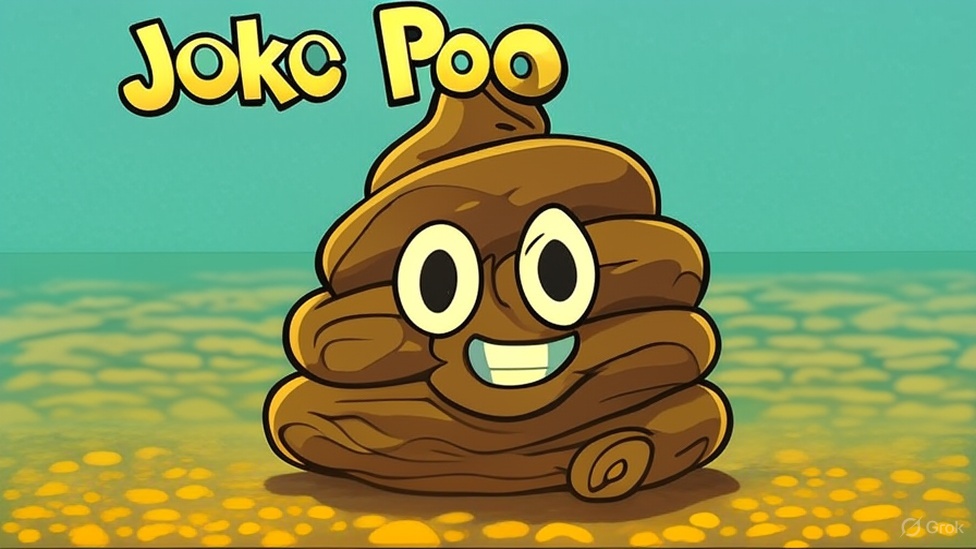He sits down, the barber hands him a small wooden ball and says:
“Put this inside your mouth. Left cheek first, then right. It’ll stretch the skin so I can shave you clean.”
The guy nods puts it inside, but then asks:
“What if I accidentally swallow it?”
The barber shrugs and says:
“Eh, no problem. Just bring it back tomorrow… like everybody else does.”
Joke Poo: Gnome Goes Gardening
A gnome goes to a garden supply store to buy fertilizer. He approaches the counter, and the shopkeeper presents him with a tiny, perfectly round mushroom cap.
“Put this under your garden. First near the roses, then near the tomatoes. It’ll enrich the soil so everything grows huge!”
The gnome nods and places the mushroom cap carefully, but then asks, “What if a bird eats it?”
The shopkeeper shrugs and says, “Eh, no problem. Just tell him to come back tomorrow… like everybody else does.”
Alright, let’s dissect this joke.
Key Elements:
- The Setup: A classic setup of a guy going to the barber. It establishes a relatable, everyday situation.
- The Unusual Request: The barber’s instruction to use a wooden ball is unexpected and immediately raises questions. This is the “weirdness trigger.”
- The Question/Concern: The guy’s worry about swallowing the ball is a natural and logical reaction. He verbalizes what the audience is likely thinking.
- The Punchline: The barber’s casual response reveals a bizarre, recurring practice, highlighting the ridiculousness of the entire situation. The humor lies in the unexpected normalcy the barber assigns to something so strange. It subverts expectations. The joke implies many have swallowed the ball before and the barber just expects it.
Now, let’s use these elements for comedic enrichment. Here are a few approaches:
1. The “Did You Know?” Route:
- “Did you know that historically, barbers weren’t just stylists? In medieval times, they performed minor surgeries and dentistry! So, giving you a wooden ball to stretch your cheek is probably the least weird thing they’ve asked of someone.”
- “Fun Fact: The fear of swallowing small objects is called ‘deglutitionphobia.’ Luckily, for customers of that barber, it seems to be temporary…and reusable!”
2. The Extended Joke/Alternative Punchline:
- “Guy goes to a barber to get shaved. The barber hands him a small wooden ball and says, ‘Put this inside your mouth. Left cheek first, then right. It’ll stretch the skin so I can shave you clean.’ The guy nods, puts it inside, but then asks, ‘What if I accidentally swallow it?’ The barber shrugs and says, ‘Eh, no problem. But be warned, it’ll come out looking like you’ve been gnawing on a hamster.'”
- (Building off the “minor surgeries” fact) “Guy goes to a barber, same setup. The barber shrugs after the swallowing question and says: “Don’t worry, I’ve got the scalpel ready. We’ll just dig it out. Used to do a lot of this back in the day…though usually with different objects, and a lot more yelling.”
3. The Witty Observation:
- “The real question isn’t why the barber uses a wooden ball, but why wooden? Wouldn’t a small, sanitized stress ball be less…splintery?”
- “It’s always the everyday professions that have the most bizarre secrets. You think you’re just getting a shave, but you’re actually participating in a silent, unsettling agreement involving a shared wooden sphere.”
Why these work:
- They build on the existing humor. The “Did You Know?” tie into historical context.
- They inject a new layer of absurdity.
- They are unexpected, just like the original joke.
- They play with the listener’s imagination, which is crucial for good humor.
Ultimately, comedic enrichment is about enhancing the original joke by adding new elements or perspectives that build upon its core humor. It’s about amplifying the absurdity and making the listener think – and hopefully, laugh even harder!


